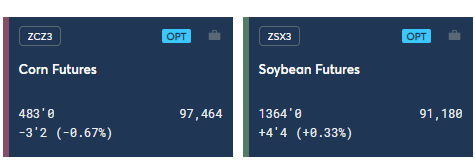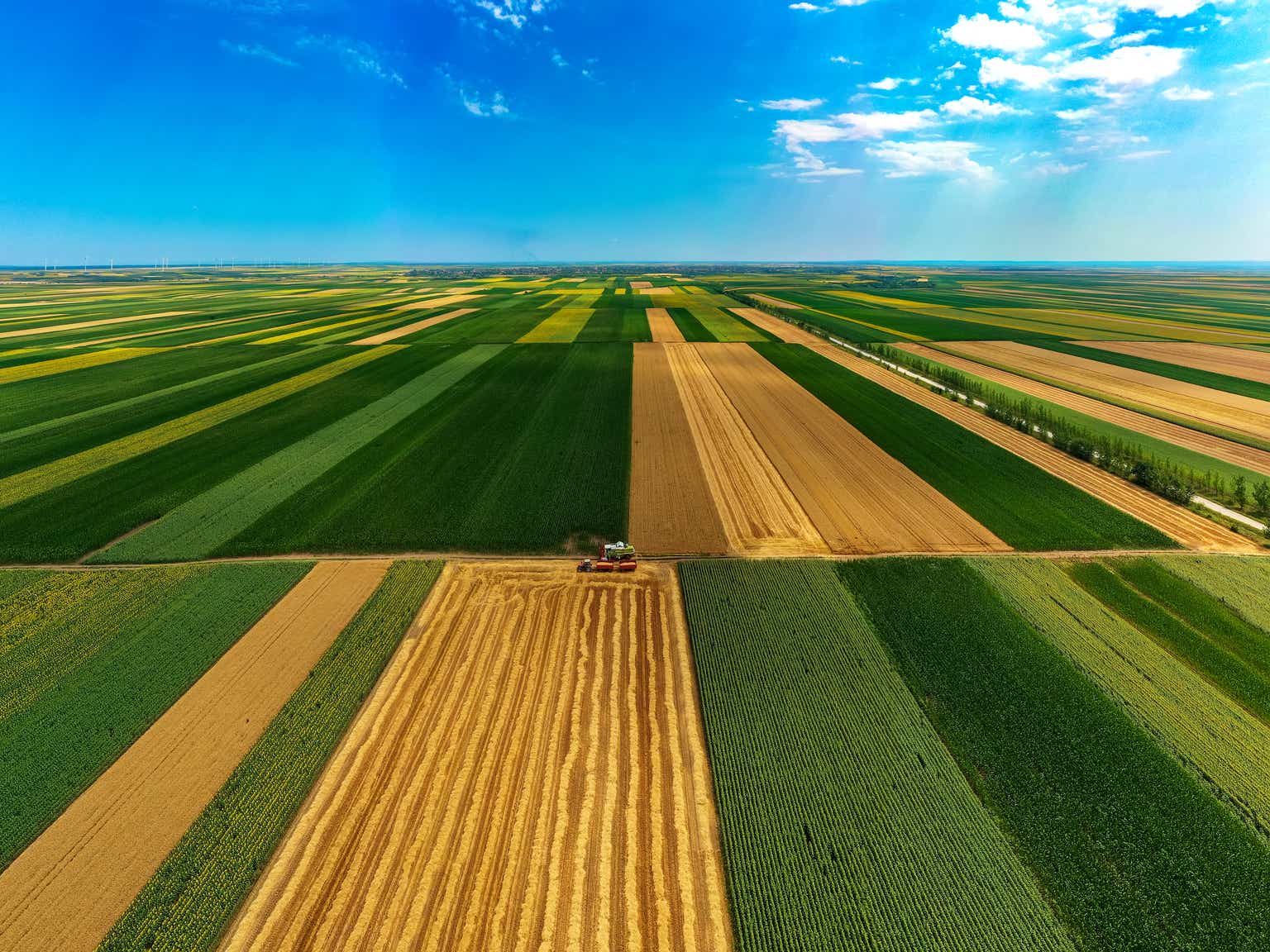By Oliver Sloup
At a glance
- More than 1,800 samples of corn and soybeans were recorded to provide an estimated yield for each state as part of the Pro Farmer Crop Tour.
- With the soybean crop still developing, weather will continue to be a focus heading into harvest season.
The 2023 Pro Farmer Crop Tour has officially come to an end. Over the course of four days, crop scouts (including myself) pulled a Pro Farmer record 1,800 samples of corn and 1,800 samples of soybeans across seven states which make up for nearly 70% of corn and soybean acres. Each year, the Tour is divided into two sides, the East and the West.
Within each of those sides are about 20 different routes that are split amongst groups of two to four scouts per car. The scouts come from a wide variety of backgrounds including farmers, brokers, reporters, and hedge funds.
Each team of scouts is tasked with collecting samples from random corn and soybean fields every 12-15 miles along their given route.
Collecting the Corn Data
Part of collecting good data is using consistent methods in an effort to remove any bias. When the scouts enter a corn field, they will walk 35 paces past the end rows and use that as a starting point.
They will then attach a 30ft rope to a stalk and calculate the average number of ears in each row within that 30ft stretch. At the end of the rope, scouts pull the 5th, 8th, and 11th ear from one of the rows.
They will then husk those ears and measure the length of each sample and find an average of the three. Next, scouts will count the number of kernels around on each (which will always be an even number).
To find an estimated yield for that particular sample, they use this equation: ear count x grain length x kernel rows. They will then divide that number by the row spacing, or inches between each row.
It’s important to note that these yield checks aren’t meant to estimate a yield for that particular field or county. The idea is to get enough random samples to provide an estimated yield for each state.
Wide Variety of Yields in Iowa
The Pro Farmer Crop Tour estimated the national average corn yield to be at 172 bushels per acre with the margin for error being +/- 1%. That rate holds steady with 2022, which came in at 173 bushels per acre, according to the USDA.
As far as state by state goes, Nebraska, Minnesota, and Iowa were the biggest question marks. On my route specifically, Iowa had the most variability with yield checks ranging from 88 bushels per acre up to 222 bushels per acre.
Talking with other scouts on the Eastern and Western side, that variability seemed to be a theme throughout much of the state. With Iowa being the top-producing corn state in the U.S., it will no doubt be a focal point for the market as we head into harvest.
Weather is likely the primary factor with such variance in yields. About 25 percent of Iowa was experiencing no drought as of late August, while 41 percent of the state – mostly the eastern portion – was experiencing severe drought or worse, according to the U.S. drought monitor.

Collecting the Soybean Data
With soybean development largely incomplete, the focus for the scouts on Crop Tour is to provide an estimated pod count in a 3ft x 3ft area. They do this by measuring the number of plants in a 3ft space and multiplying that by the number of pods on three plants within that space.
They will then multiply that by 36 inches and divide that number by the row spacing. Pro Farmer will then use that data versus previous years data to formulate an estimated yield.
Weather Remains the Focus for Soybeans
This year’s Pro Farmer Crop Tour estimates the national average soybean yield at 49.7 bushels per acre with the margin of error being +/- 2%, which puts the yield range from 48.7-50.7bpa. That is consistent with yields in 2022, which averaged 49.5 bushels per acre across the U.S., according to the USDA.
With the soybean crop still developing, weather will continue to be a big focus. The NOAA 90-day forecast for the fall shows the Midwest with equal chances of above or below average precipitation.
If above-normal temperatures coupled with below-normal precipitation levels continue through September, it could hinder yield potential.
With uncertainty still looming, weekly options could be a great tool for producers, end-users, and traders to consider using to help manage short-term risk or to express an opinion in the market.
Weekly options have gained popularity in 2023 as producers contend with factors like inflation, high input costs and geopolitical conflict in addition to weather concerns.
Volatility in corn and soybeans futures markets saw normal levels of seasonal volatility through the summer leading to more than 5.5 million agricultural short-term options traded at CME Group through August, an average of 34,000 contracts a day.
The Pro Farmer Crop Tour is a traditional growing season indicator of what to expect from corn and soybean yields. Understanding how data is gathered can help guide market watchers as we head into harvest season.
Original Post
Editor’s Note: The summary bullets for this article were chosen by Seeking Alpha editors.
Read the full article here











